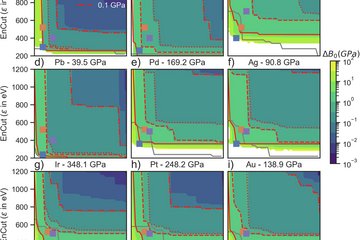All genres
21.
Talk
Effect of annealing conditions on the selective oxidation of quarternary model alloy. 4th International Conference on Diffusion in Solids and Liquids, Barcelona, Spain (2008)
22.
Talk
Hot-dip galvanizing simulation of model alloys and industrial steel grades: Correlation between surface chemistry and wettability. GALVATECH `07, 7th International Conference on Zinc and Zinc Alloy Coated Steel Sheet, Osaka, Japan (2007)
23.
Talk
Effect of alloy composition on the selective oxidation of ternary Fe–Si–Cr, Fe–Mn–Cr model alloys. ECASIA 2007, 12th European Conference on Applications of Surface and Interface Analysis, Brussels-Flggey, Belgium (2007)
24.
Talk
Influence of Si, Mn and Cr on the selective oxidation of model alloys. EUROCORR2006, Maastricht, The Netherlands (2006)
25.
Poster
The Influence of Oxide Formation on the Diffusion Properties in Iron Alloys - The Thermogravimetric Behaviour in Early Stages of Oxidation. Gordon-Kenan Research Seminar on High Temperature Corrosion and Gordon-Research Conference on High Temperature Corrosion, New London, NH, USA (2011)
26.
Poster
Possibilities for high-temperature corrosion at MPIE. International Symposium on High-temperature Oxidation and Corrosion, Zushi, Japan (2010)
27.
Poster
Novel Setup for Metal/Gas Reactions at High Temperature. 6th International Conference on Diffusion in Solids and Liquids: Mass Transfer, Heat Transfer and Microstructure and Properties, Paris, France (2010)
28.
Thesis - PhD
Selective surface oxidation and segregation upon short term annealing of model alloys and industrial steel grades. Dissertation, Ruhr-Universität, Fakultät für Physik und Astronomie, Bochum, Germany (2007)











